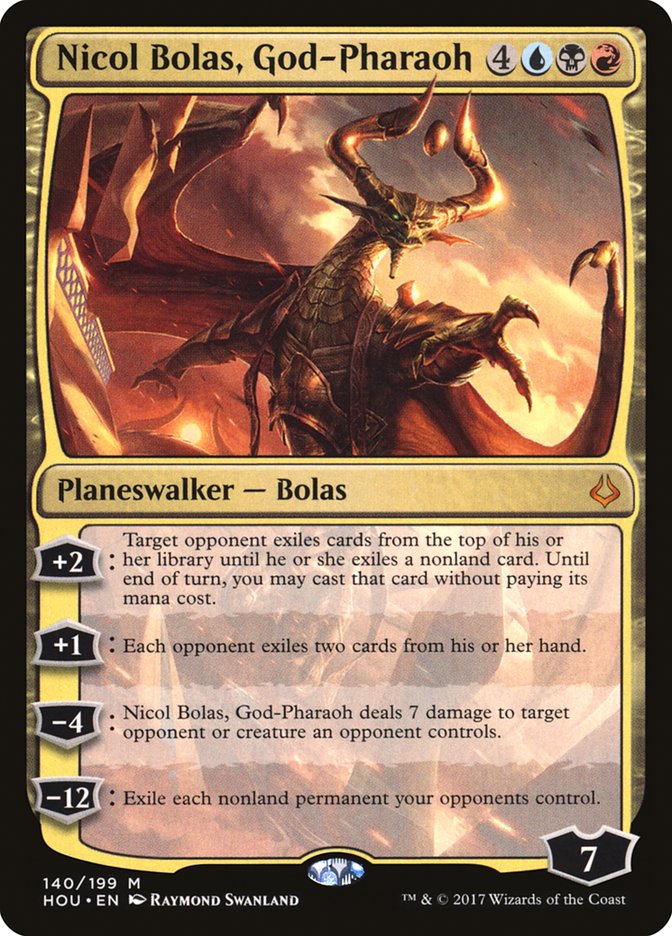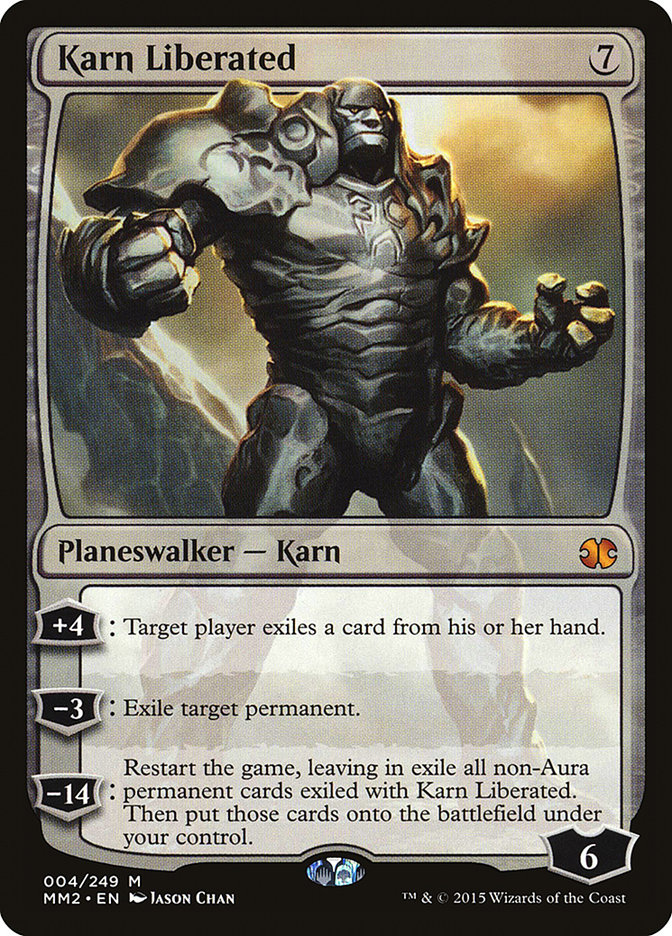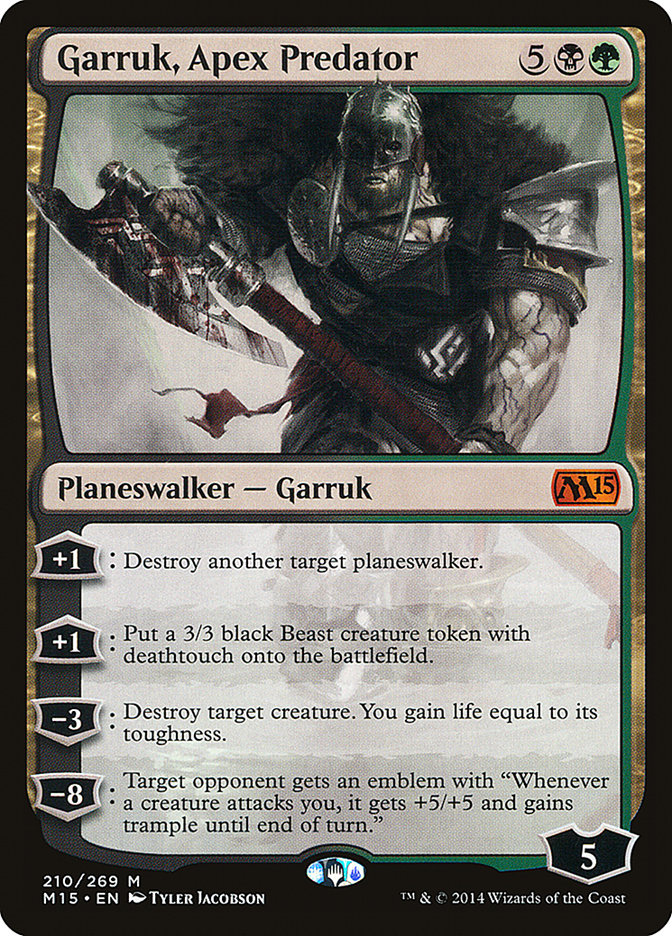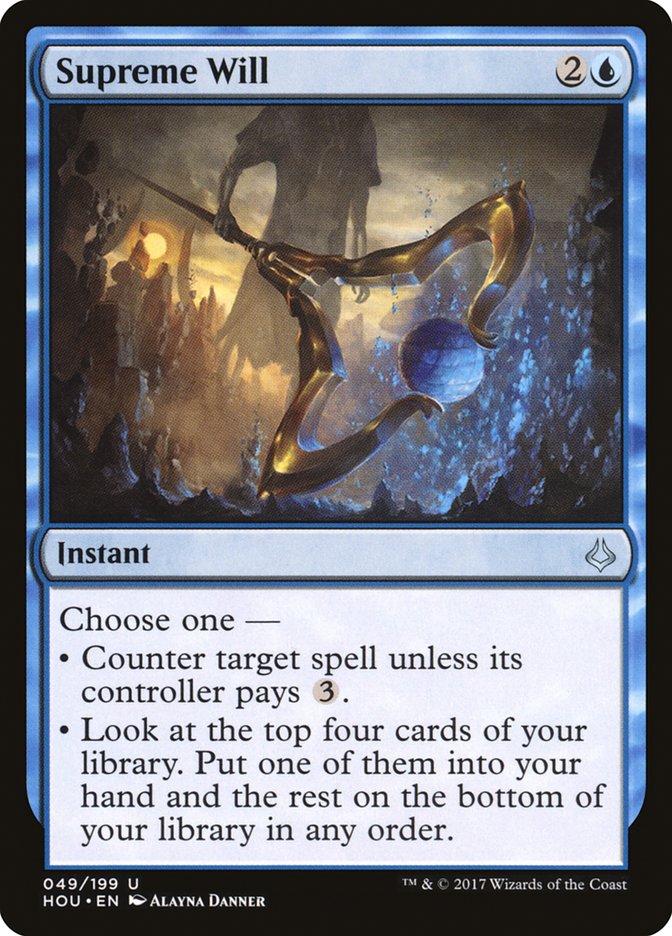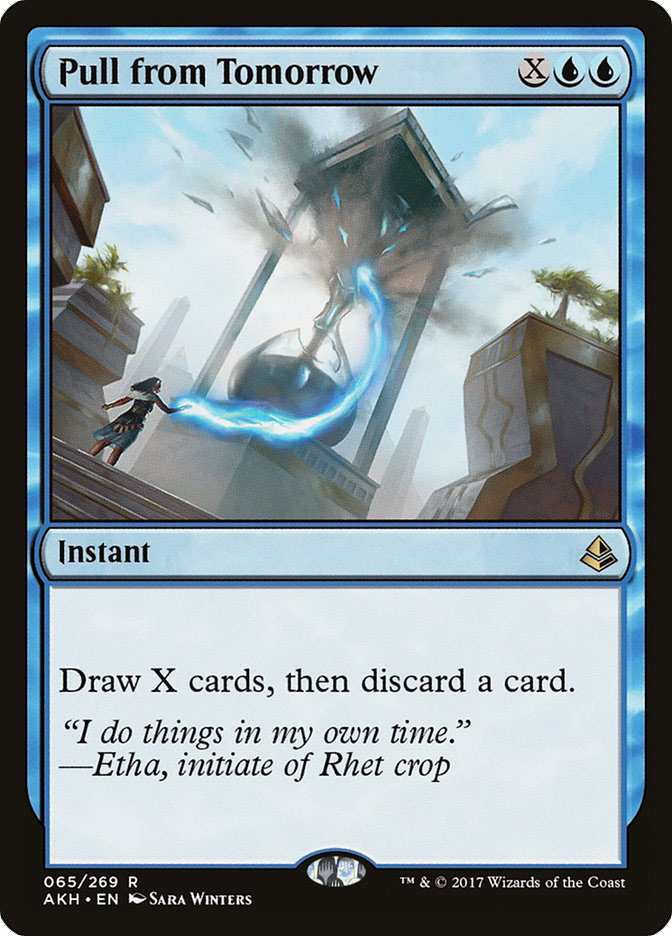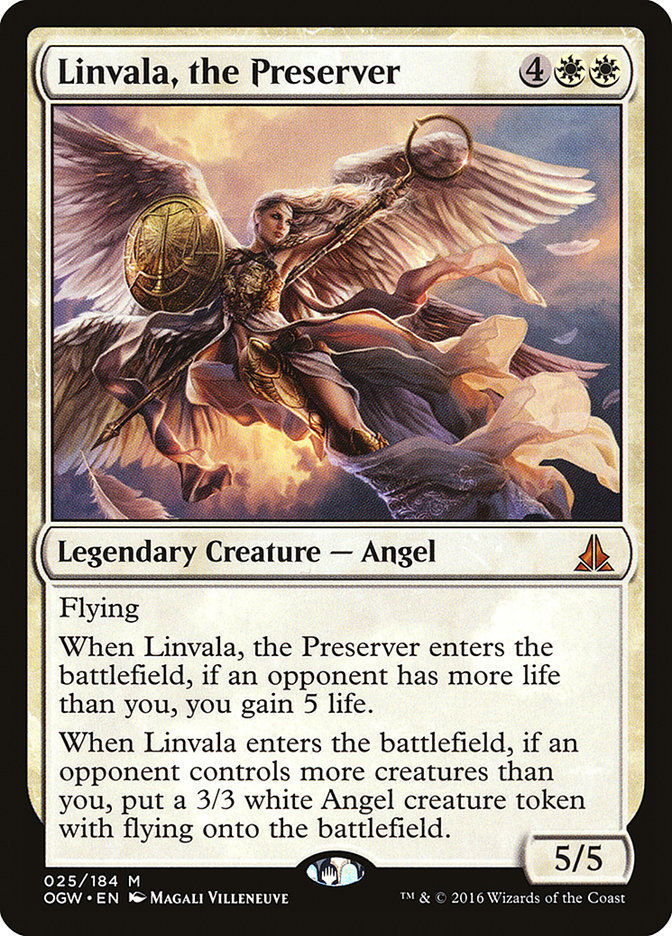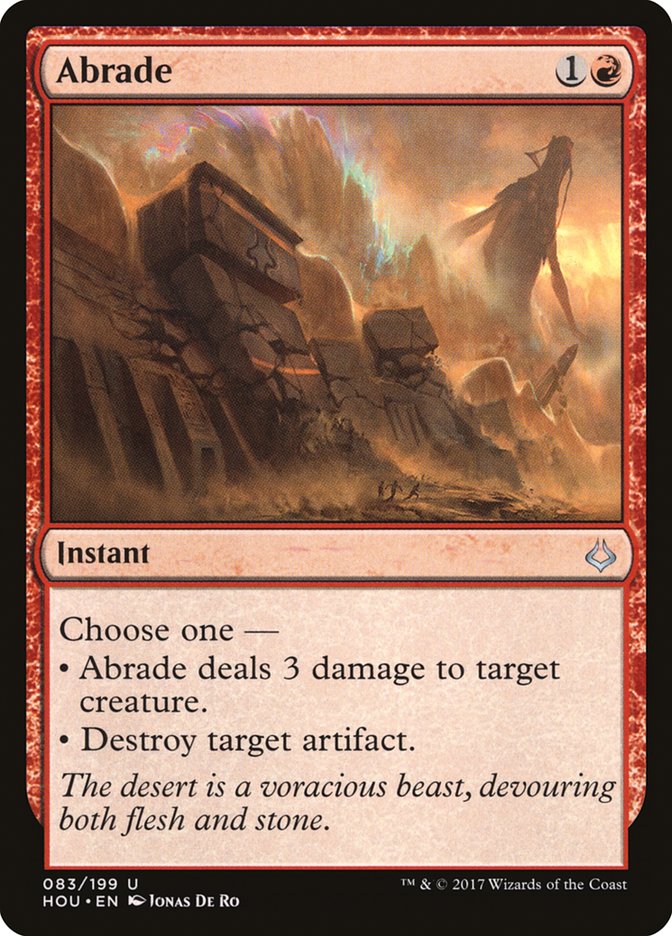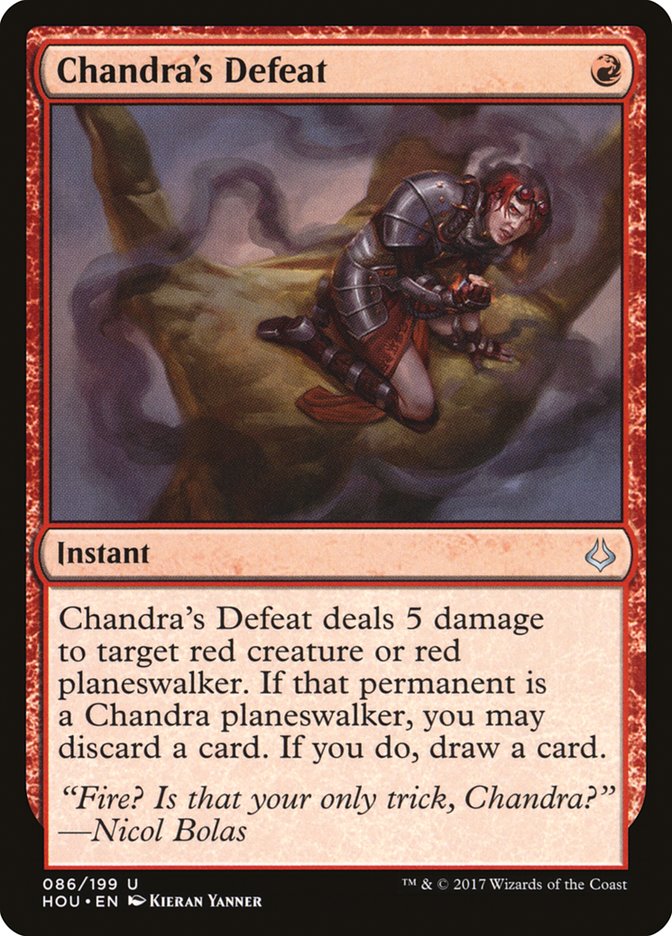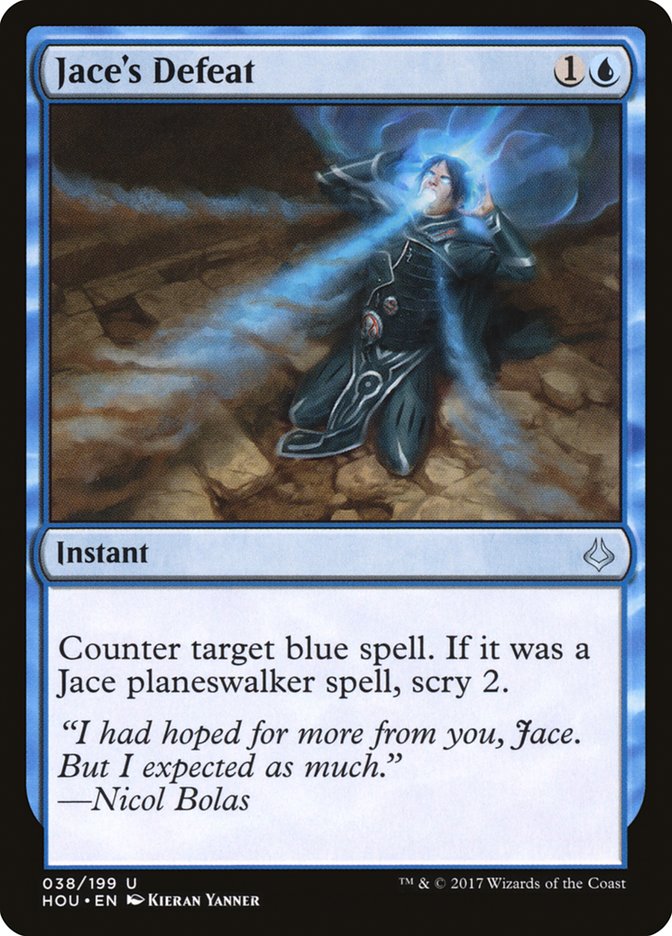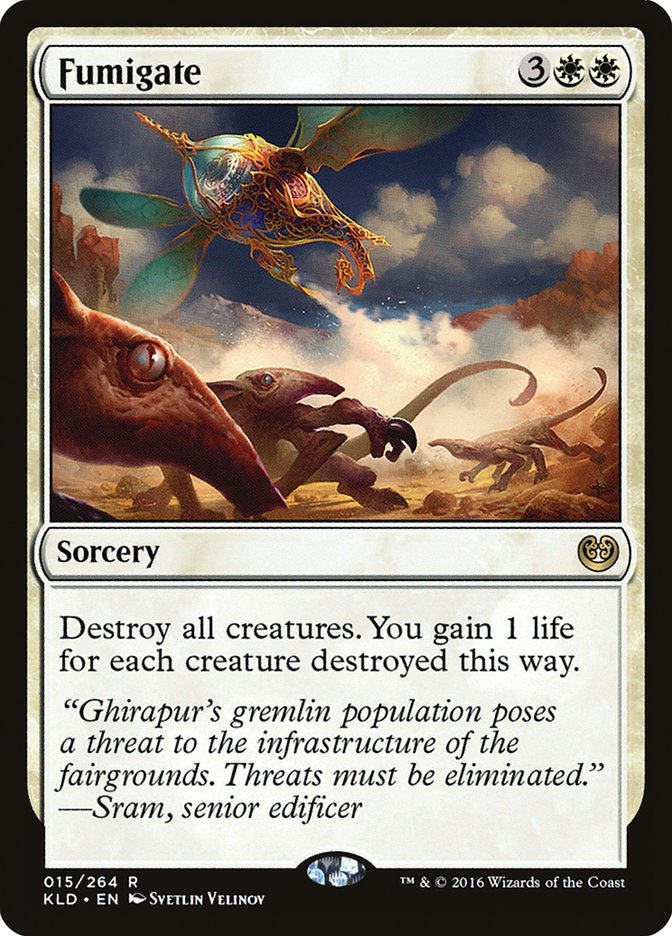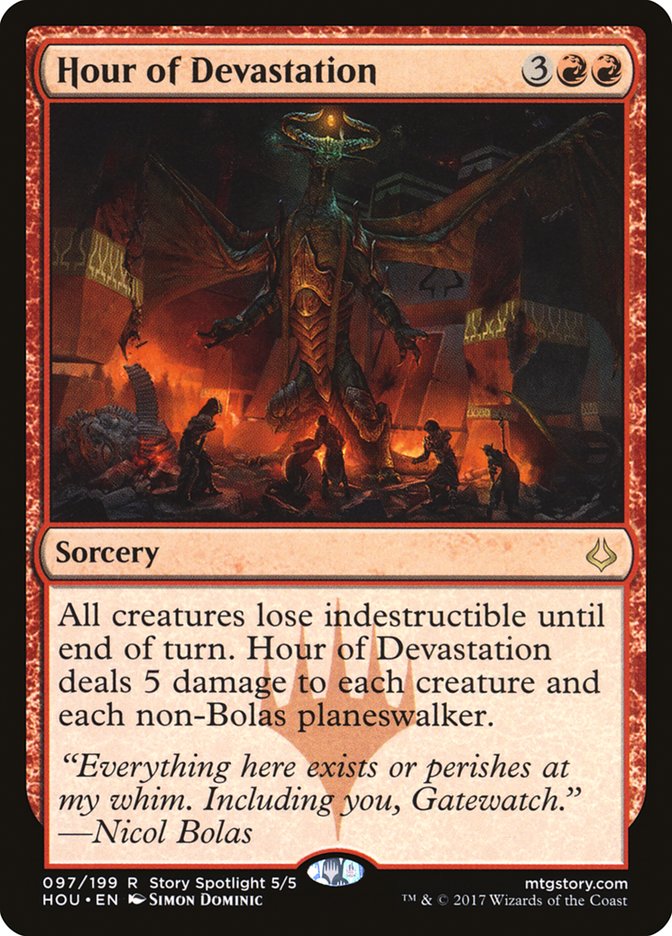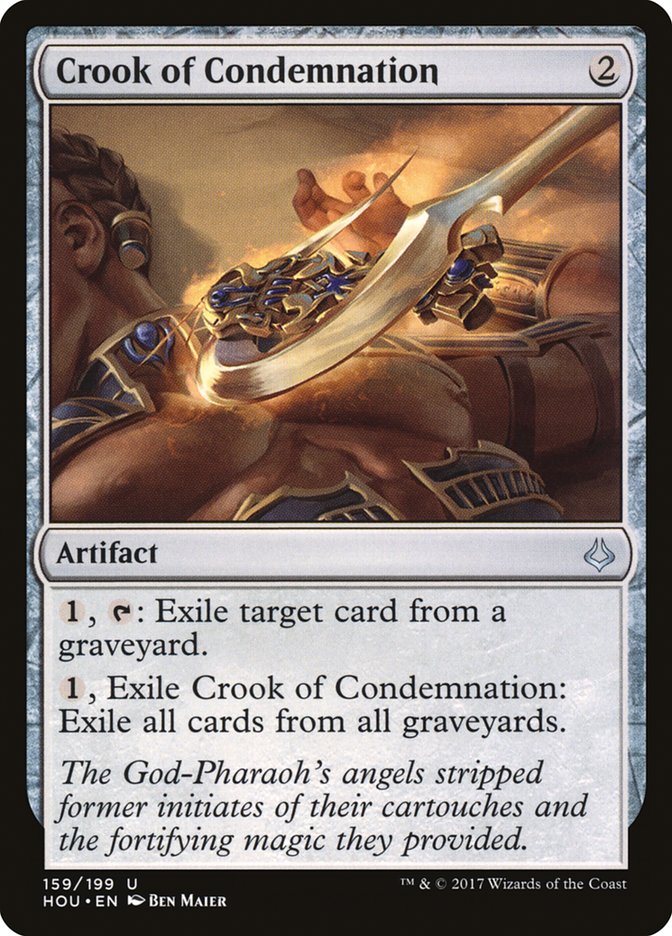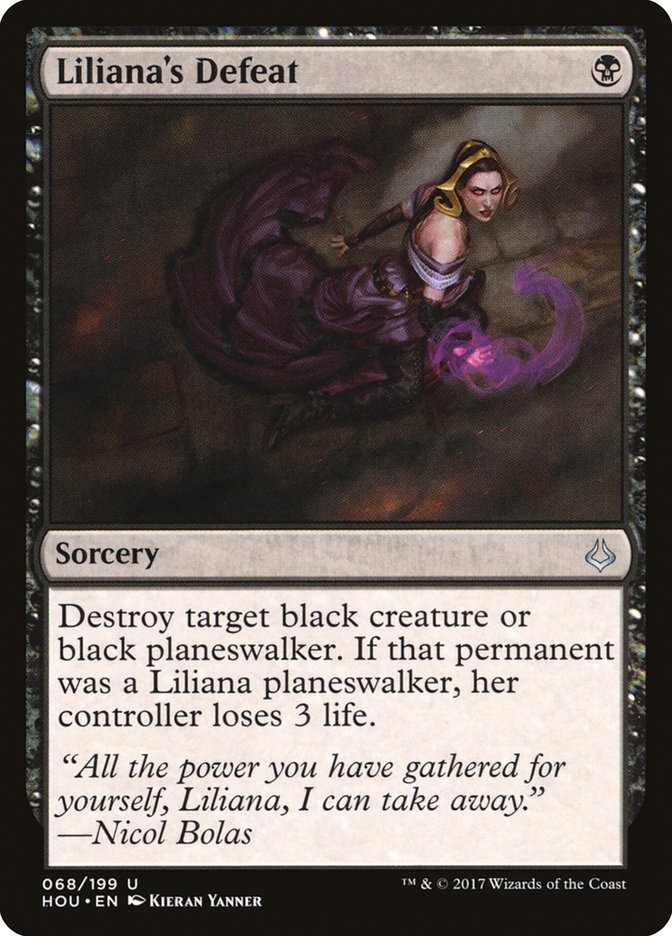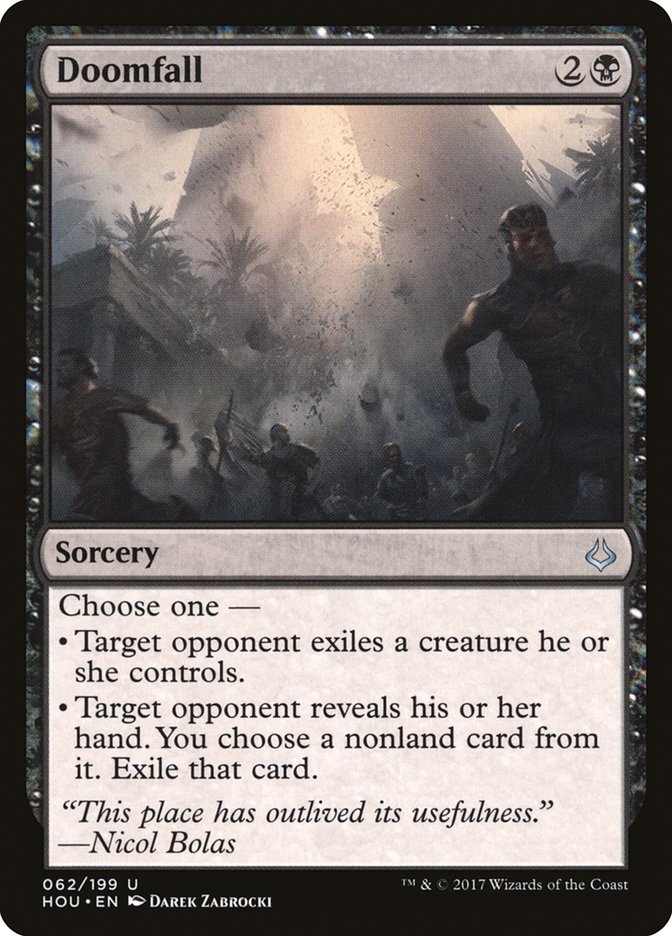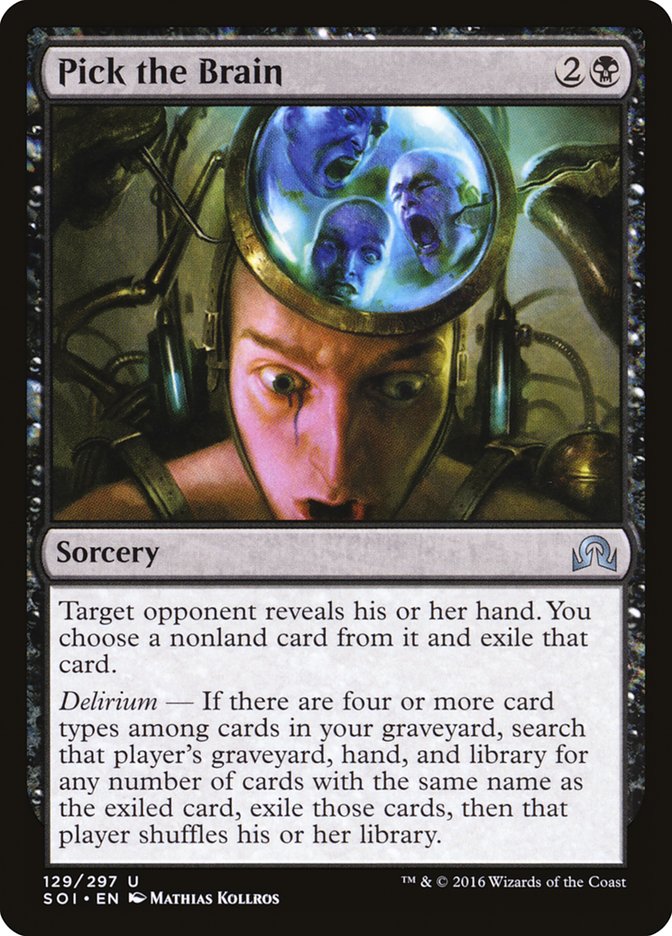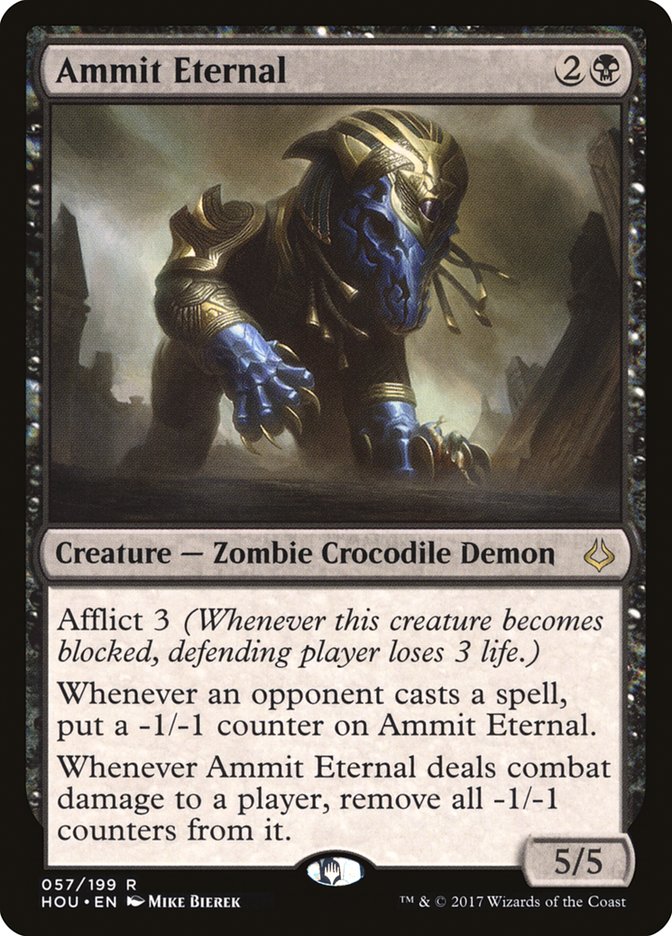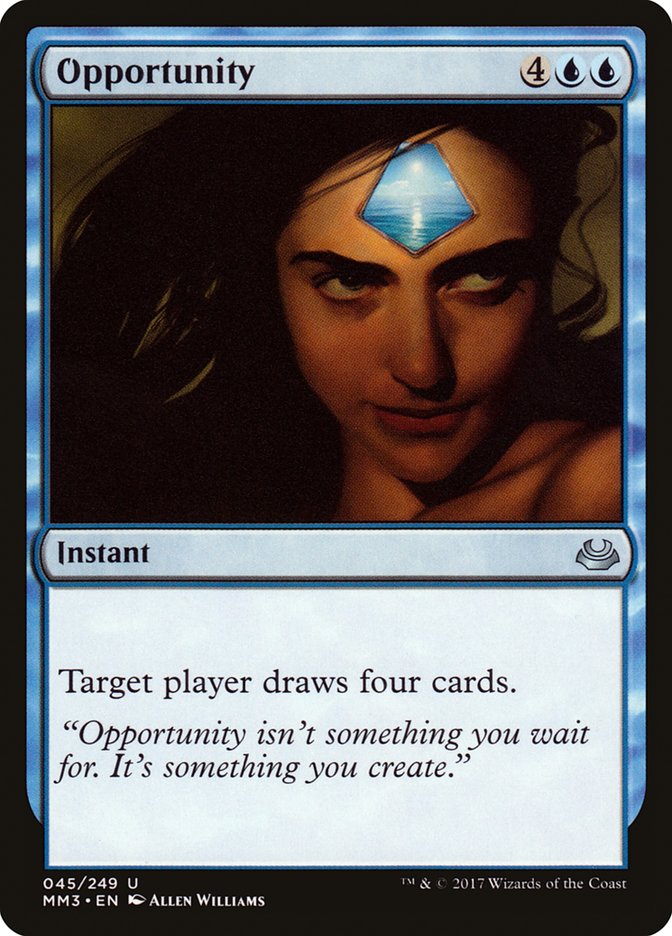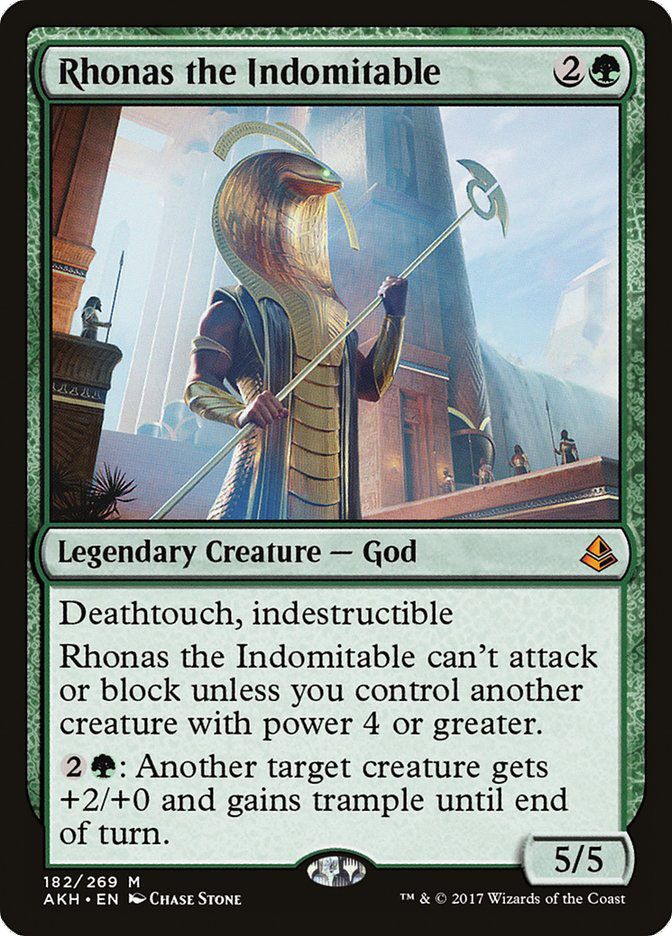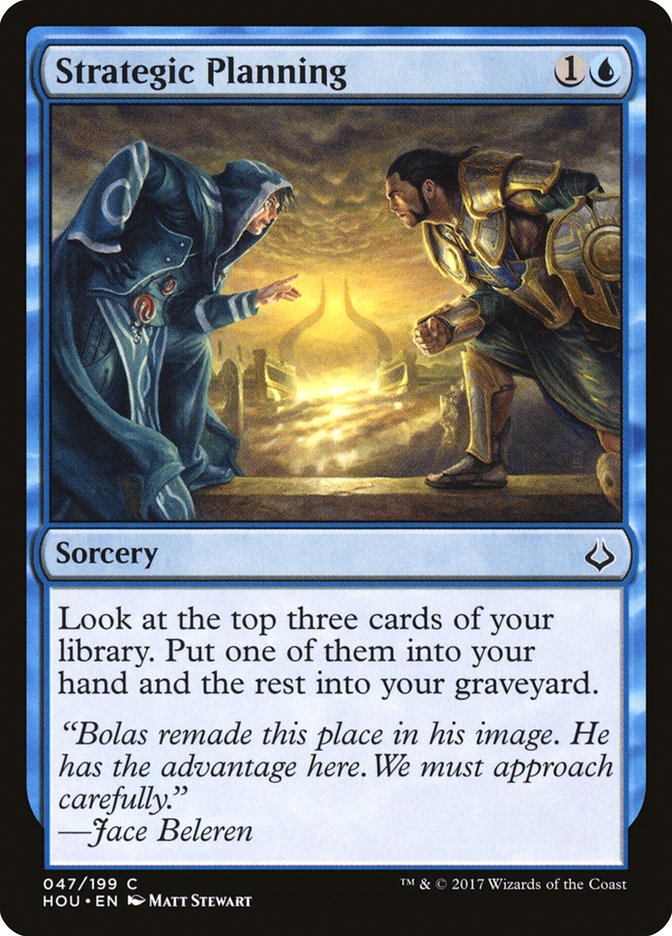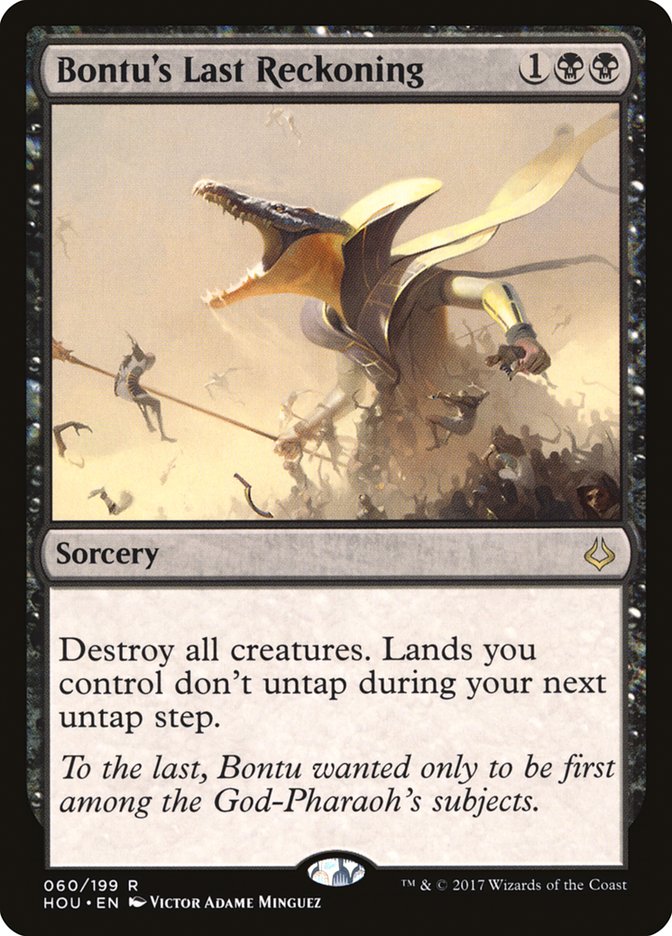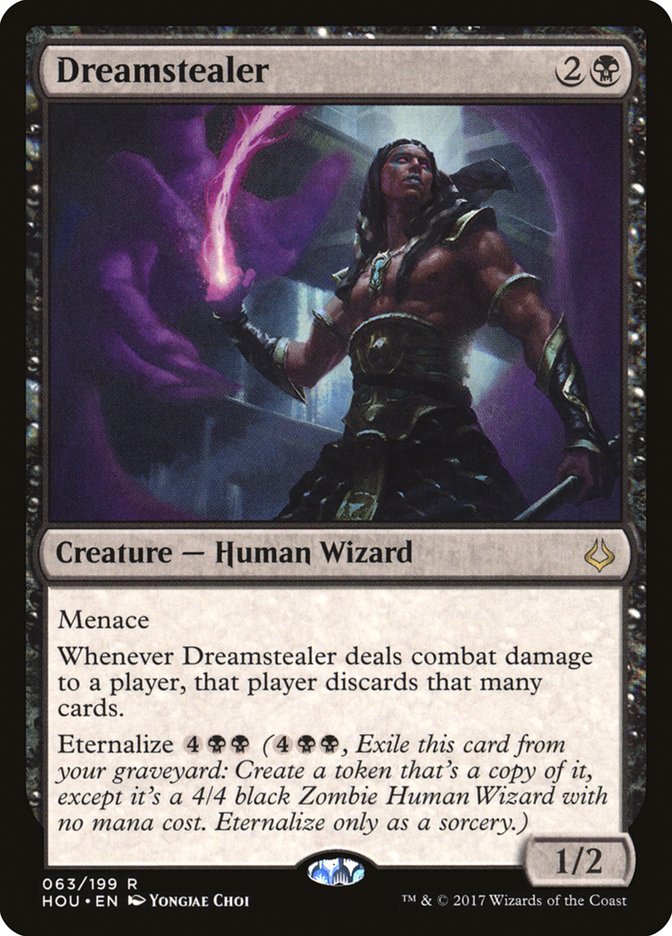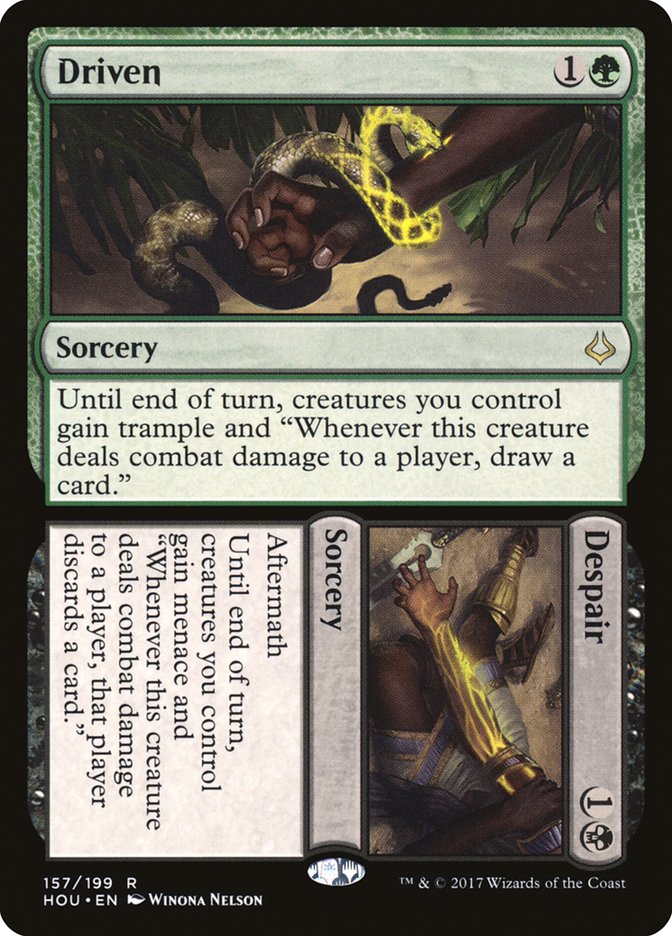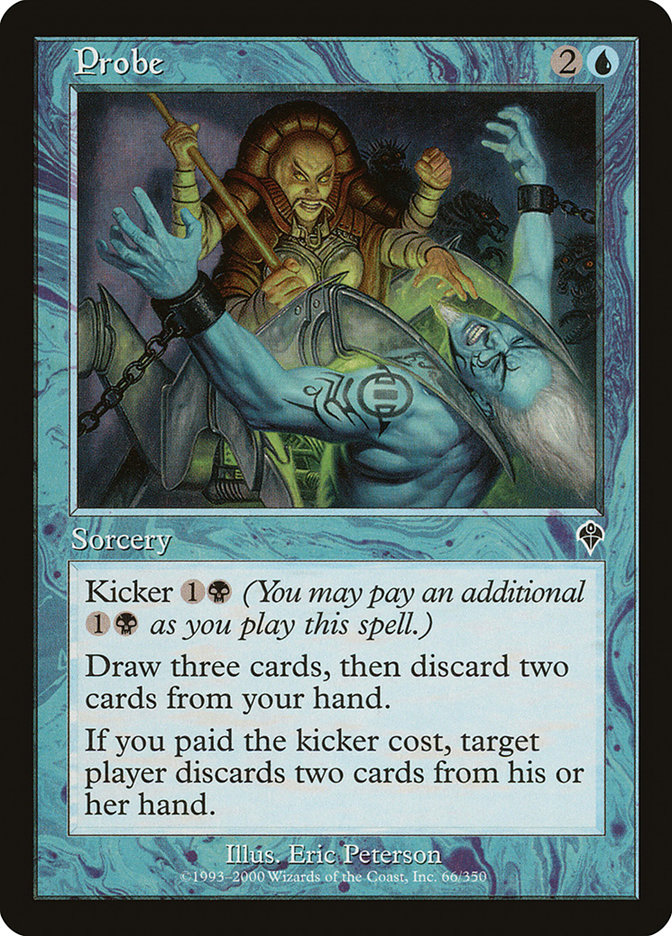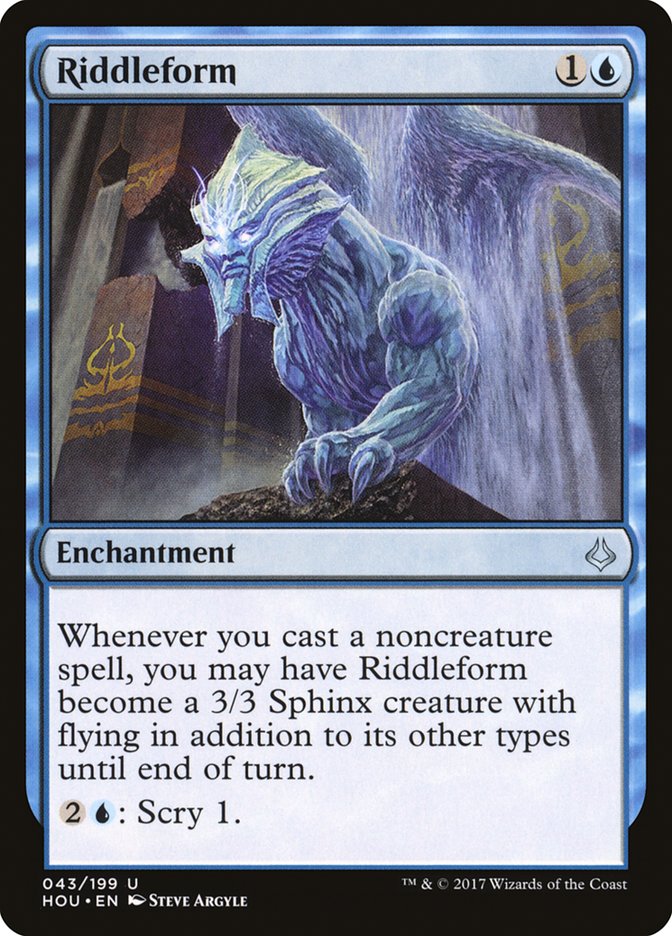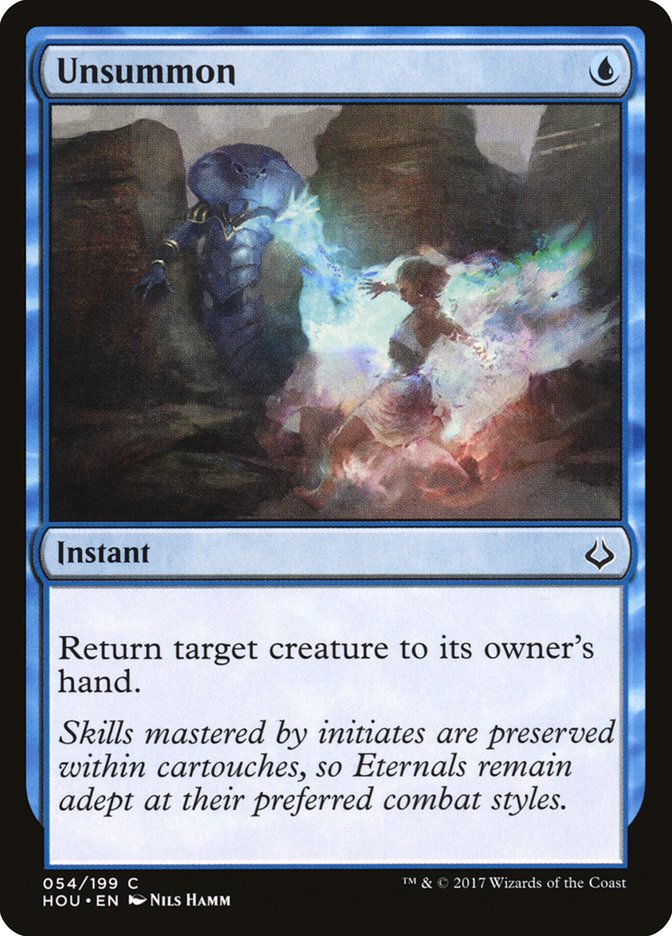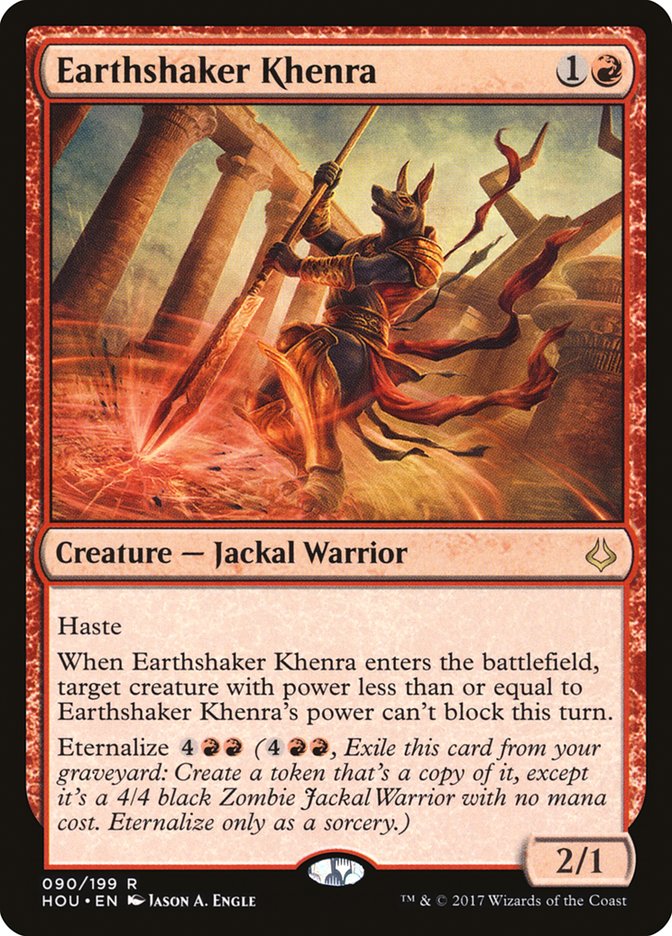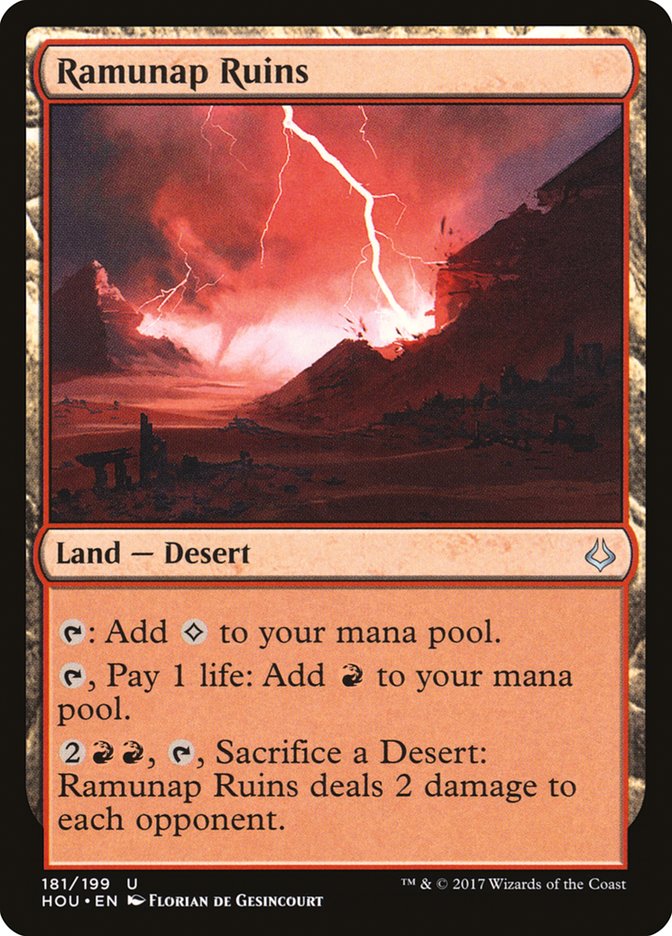…for now.
It’s been more than eight years since Gabriel Nassif won the last Pro Tour in Kyoto.
Nicol Bolas, God-Pharaoh has wasted no time leaving a mark on Standard, and today, I would like to take a moment to celebrate some of the Grixis cards of Hour of Devastation, starting with the God-Pharaoh himself:
Nicol Bolas, God-Pharaoh is no joke. An extensive breakdown can be found here, but the short version is:
Both the +1 and the +2 are great and give you options in different directions. The -4 is possibly the strongest ability of them all, and the ultimate gives you an inevitability that forces your opponents to play different from how they otherwise would.
Nicol Bolas, God-Pharaoh is kind of a cross between Karn Liberated and Garruk, Apex Predator, with a little Sorin Markov thrown in for good measure. He’s also a first-week champion in the hands of Michael Hamilton, splashing Bolas in his Jeskai Control deck:
Creatures (2)
Planeswalkers (5)
Lands (27)
Spells (26)

Hamilton’s list is Jeskai nearly all the way down, with only a single Fetid Pools betraying his Aether Hub’s true intentions long-term. It also makes use of a couple of cards from Hour of Devastation that will surely be among the most ubiquitous.
First, the Mana Leak / Impulse hybrid, Supreme Will.
Supreme Will has delivered as promised and is particularly useful in three-color decks, where needing only a single blue is meaningful advantage. The other important part of the recipe is having powerful situational cards to dig to. The miser’s Nicol Bolas obviously counts, but Hamilton has lots of powerful winners to find in the right spots.
Hamilton also gets extra mileage out of the Torrential Gearhulk and Linvala, the Preserver because of Nahiri, the Harbinger.
Abrade has lived up to the hype, though I could be into the split here with Harnessed Lightning. Abrade is like a Harnessed Lightning that more reliably kills Heart of Kiran, plus takes down Torrential Gearhulk on its own, while also answering Dynavolt Tower. That said, it still doesn’t kill most four-toughness creatures.
As we’ll see today, more than a few players got an advantage by increasing their use of four-toughness threats, capitalizing on the popularity of Abrade. Even Hamilton’s nearly creatureless deck gets in on the action with a return to the Glorybringer sideboard.
Glorybringer is particularly sweet against players that want to Abrade the Torrential Gearhulks they assume must be around. Generally speaking, I also just like the ability of Glorybringer to trump planeswalker-on-planeswalker battles.
It’s hard to know this early in the season where we’ll want the extra sideboard help. For now, however, I generally like Chandra’s Defeat in small numbers as a tool against Glorybringer and Chandra, Torch of Defiance while also providing a little bit of a hedge against red aggro. That it hits Wandering Fumarole and Needle Spire helps.
Jace’s Defeat is in the interesting space of being very desirable, but also somewhat less novel than many options. Dispel costs just one, for instance, and Summary Dismissal can stop Ulamog and his trigger. Jace’s Defeat is kind of a Negate that can also counter Torrential Gearhulk, Spell Queller, and Rogue Refiner, among others. Great card; it’s just a question of how many slots we are willing to spend for each problem.
Fumigate versus Hour of Devastation is an excellent question. Both are excellent cards and have their merits, but given how many more decks can play Hour of Devastation,it’s interesting to consider if Hamilton’s Fumigates benefited from a format prepared the other way. That said, I think I might be worried that two Cast Outs and a Nicol Bolas isn’t quite as much planeswalker defense as I’d like.
Nicol Bolas may be the most exciting reason to play Grixis, but it is Hour of Devastation that most makes us not miss white. Getting to play such a big sweeper without needing white is a revolutionary change to the rules of engagement. For instance, take Jungje Choi’s Grixis Control list:
Creatures (4)
Planeswalkers (1)
Lands (25)
Spells (30)

Of course, Choi’s list is a U/R Control deck splashing a Nicol Bolas maindeck, with a second in the sideboard. Four Aether Hubs and one each of Fetid Pools, Sunken Hollow, and Canyon Slough are plenty of sources for a seven-drop with so much library manipulation. Twenty-five lands might seem a little low, compared to what we’re used to, but Choi’s list features a playset of Hieroglyphic Illumination along with three Glimmer of Genius, not to mention a full playset of Supreme Wills.
I’m not sure I could get away from Magma Spray, even just as a sideboard card. I guess the theory is that Crook of Condemnation is doing a lot of that work.
Between Crook of Condemnation and Scavenger Grounds, the format has become much more hostile for graveyard-based strategies. Delirium and Zombies are the two that took the biggest hit, but even Torrential Gearhulk takes some collateral damage. Lots of people were registering less than four Gearhulks in their U/X decks, and this might have been a part of the equation. For instance, Devin Beeghly’s Grixis list replaces two of the Torrential Gearhulks with a second Nicol Bolas and one copy of The Scarab God.
The Scarab God is a lot like an easier to cast Weatherseed Treefolk with a better body and a much, much better ability. Being able to pay four to make a 4/4 with upside has a profound impact on the game, and The Scarab God dying to your hand gives us a lot of inevitability. When the game goes long, The Scarab God is just absolutely devastating.
Creatures (3)
Planeswalkers (7)
- 1 Ob Nixilis Reignited
- 1 Jace, Unraveler of Secrets
- 3 Chandra, Torch of Defiance
- 2 Nicol Bolas, God-Pharaoh
Lands (26)
Spells (24)

I wonder if it’s a coincidence that the most successful cards conveying the defeat of the Gatewatch are all Grixis cards?
This one is pretty easy to point at the right places and might actually make life harder for Ob Nixilis Reignited if he gets caught up in the crossfire from people going after Liliana, Nicol Bolas, Grim Flayer, and Diregraf Colossus.
I’m not sure how I feel about Doomfall as a sideboard card yet, but it’s at least fine. I’m a little concerned about the mana efficiency compared to other options, but I like the versatility over something narrower like Transgress the Mind, Lay Bare the Heart, or Dispossess.
In some ways, it’s kind of a Pick the Brain that can be use creature removal, a sort of hedge, though ever Doomfall you play generally could have been a Pick the Brain if you really wanted.
John Pellman actually ended up going with a 3/1 split between Pick the Brain and Doomfall in the sideboard of the Sultai Delirium deck he cashed with this past weekend. Of course, he’s also got a couple copies of Lay Bare the Heart, not to mention Never // Return to help amplify his creature-defense in the maindeck.
Creatures (18)
- 1 Kalitas, Traitor of Ghet
- 3 Mindwrack Demon
- 1 Tireless Tracker
- 3 Ishkanah, Grafwidow
- 4 Grim Flayer
- 1 Gonti, Lord of Luxury
- 1 Noxious Gearhulk
- 1 The Scarab God
- 3 Ammit Eternal
Planeswalkers (4)
Lands (23)
Spells (15)

There are two big new additions here, the first of which is the aforementioned The Scarab God. In some ways, The Scarab God is kind of your one Emrakul, giving you a creature to Traverse to later in the game that just completely takes over. When you play The Scarab God on nine mana and then immediately make a Zombie Ishkanah, Grafwidow, you are really, really doing it.
It might seem strange, splashing blue for a single The Scarab God; however, I’m a big fan of this plan. We’re not exactly tanking the manabase, and the end-game is just so good.
The other new addition has looked very promising so far, but I guess I’m still skeptical of it long-term.
Ammit Eternal is made to be used in removal-heavy decks such as this, where it’s kind of just a better Phyrexian Negator with a much smaller drawback…
Okay, when you put it that way…
There is one more Nicol Bolas, God-Pharaoh deck I wanted to touch on, however. Todd Stevens finished 35th with an unbelievably cool take on the Glorybringer / Bristling Hydra style of Temur Energy, splashing for two copies of the God-Pharaoh.
Creatures (18)
- 1 Tireless Tracker
- 3 Longtusk Cub
- 2 Bristling Hydra
- 2 Whirler Virtuoso
- 4 Servant of the Conduit
- 4 Rogue Refiner
- 2 Glorybringer
Planeswalkers (7)
Lands (20)
Spells (15)

With a playset of Servant of the Conduit, Oath of Nissa, and Aether Hub, Stevens doesn’t even have to make any concessions to his manabase to support Bolas better than most.
While Nicol Bolas’s +2 and +1 abilities are great everywhere, this is a list that really pushes the -4 ability a lot harder. Getting to drop Bolas and dome your opponent for seven is brutal, and even if that doesn’t kill them, you’ve still got Bolas!
The highest finishing Temur Energy player was Jason Morgan, reaching the Top 8 with another innovative addition from Hour of Devastation.
Creatures (26)
- 2 Tireless Tracker
- 4 Longtusk Cub
- 3 Bristling Hydra
- 1 Whirler Virtuoso
- 4 Servant of the Conduit
- 4 Rogue Refiner
- 4 Glorybringer
- 2 Rhonas the Indomitable
- 2 Champion of Wits
Lands (21)
Spells (13)

Like Bolas, Champion of Wits is also wasting no time getting some Top 8s under its belt. Here, it’s like Rogue Refiners five and six, and while it’s a little smaller up front, the eternalize ability is kind of Opportunity.
For just a mana more, we’re drawing four cards, and while we then have to discard two, remember, it’s like this is a cantrip anyway (we already got the front side), plus we’ve got a zero-mana 4/4 (which is an excellent card). Besides, if we’re feeling really frisky, we might even Rhonas the Indomitable on the Champion of Wits with the trigger on the stack, drawing two extra cards!
This is just the tip of the iceberg for what can be done with Champion of Wits. For instance, Zan Syed really pushes the Champion hard in his Four-Color Emerge deck, taking advantage of every part of the card.
Creatures (21)
- 4 Prized Amalgam
- 4 Elder Deep-Fiend
- 4 Haunted Dead
- 1 Ishkanah, Grafwidow
- 4 Grim Flayer
- 4 Champion of Wits
Lands (22)
Spells (17)

Every time we discard a Prized Amalgam or Haunted Dead to Champion of Wits, we are beating the system. Besides, powering up Grim Flayer or Ishkanah, Grafwidow can be game-winning.
Once we’ve got the Champion of Wits on the battlefield, it’s a perfect choice to sacrifice to Elder Deep-Fiend. Being a three-drop curves perfectly into the turn 4 Deep-Fiend, but it’s also a great creature to get into the graveyard for the spots where we’ve got enough mana to eternalize it!
The split between Strategic Planning and Grapple with the Past mainly about keeping a better split between sorceries and instants for the purposes of getting delirium active. I think Grapple is a slightly stronger card in the abstract, but a mix seems reasonable if it means powering up the rest of our stuff.
While Bontu’s Last Reckoning initially looked like a Grixis card, the reveal of Hour of Devastation has removed a lot of the incentive for Grixis decks to employ such a card. Golgari, on the other hand, could definitely be talked into such a card, particularly one that might be able to bridge the tapped-down turn with Elder Deep-Fiend.
By contrast, Bontu’s Last Reckoning is probably not going to show up nearly as much in B/G Energy decks like Stephen Dykman’s list from this weekend’s Top 4.
Creatures (23)
- 2 Kalitas, Traitor of Ghet
- 3 Tireless Tracker
- 4 Servant of the Conduit
- 4 Winding Constrictor
- 4 Glint-Sleeve Siphoner
- 4 Walking Ballista
- 2 Dreamstealer
Planeswalkers (6)
Lands (25)
Spells (6)

The cool new tech here is Dreamstealer, working as an early disruptive threat that can also create a must-kill threat if the game stretches out.
I gotta admit, the prospect of dropping Nissa and giving the Dreamstealer +1/+1 is enough to make me curious. That said, I’m a little more into Driven // Despair, since it does its thing with “virtual haste.”
While it’s not a given that we’ll have two creatures that can get through unimpeded, the ability to play both halves on turn 4 and basically Probe with kicker our opponent is too good to not try. Besides, giving our creatures both trample and menace is makes them a lot harder to stop.
They don’t make ’em like that anymore…
Even when we’re breaking it up, it’s not hard to cantrip off the front side and then have the implied threat of Despair forcing them to alter their plays moving forward. It’s also kind of sweet to randomly flip a Despair when using a Liliana, the Last Hope activation or some other self-mill card.
Here’s Cameron Tousi’s take on G/B Energy, making good use of Driven // Despair:
Creatures (26)
- 3 Verdurous Gearhulk
- 4 Longtusk Cub
- 3 Bristling Hydra
- 4 Winding Constrictor
- 2 Rishkar, Peema Renegade
- 4 Glint-Sleeve Siphoner
- 4 Walking Ballista
- 2 Rhonas the Indomitable
Lands (22)
Spells (12)

The last couple of decks I’d like to take a look at today are a couple of red aggro decks with some exciting new Hour of Devastation technology. Up first, Billy Klopf’s U/R Prowess list from this weekend’s SCG Standard Classic.
Creatures (8)
Planeswalkers (3)
Lands (23)
Spells (26)
Sideboard

For starters, Riddleform is kind of a 3/3 flier for two that doesn’t die to sorcery-speed removal.
Yeah, you need to actually wake it up, but it’s a light sleeper. The backup plan of scrying is not the biggest part of the puzzle, but it is nice to have options.
Crash Through has some big advantages compared to Renegade Tactics or Expedite. You don’t need a creature on the battlefield to “cycle” it, and it can’t be fizzled by removal.
As we’ve discussed in recent weeks, Unsummon is a fine tempo play, and this is a strategy that really takes advantage of the savings in mana.
Refuse // Cooperate is absolutely devastating when cast in response to Eldrazi, whether Ulamog, the Ceaseless Hunger out of an Hour of Promise deck or Elder Deep-Fiend (as the full cost counts, even if the emerge cost was paid).
Speaking of Eldrazi, there’s a new breed of Eldrazi Aggro on the map. Jonathan Job piloted this groundbreaking new style to a Top 8 finish, combining elements of classic Eldrazi aggro decks with Red Deck Wins. However, unlike most red decks, the burn here is all about bridging to three, four, and five-mana creatures (as there is a real shortage of good two-drops in red right now).
Creatures (28)
- 2 Eldrazi Obligator
- 2 Reality Smasher
- 3 Thought-Knot Seer
- 4 Falkenrath Gorger
- 2 Kari Zev, Skyship Raider
- 2 Glorybringer
- 1 Hazoret the Fervent
- 4 Ahn-Crop Crasher
- 4 Soul-Scar Mage
- 4 Earthshaker Khenra
Planeswalkers (2)
Lands (24)
Spells (6)

This list is definitely helped out by the addition of Earthshaker Khenra, just in terms of desperately seeking anything that costs two mana.
I’m not the biggest believer in Earthshaker Khenra, but two damage with haste is decent, clearing away a chump blocker is nice, and eternalizing it does make for a solid follow-up to Fumigate.
The real addition that makes this deck possible, however, is certainly Ramunap Ruins.
The new pain-Deserts give Thought-Knot Seer and Reality Smasher a new lease on life, and Ramunap Ruins is even a perfect fit for a red aggro strategy to start with, especially when fueled by Sunscorched Deserts.
Okay, I gotta help folks get ready for PT Hour of Devastation. We’ve already gotten a pretty enticing glimpse into the metagame to come, with more early diversity than we’ve seen in a long time.
Let’s see if we can break that.


